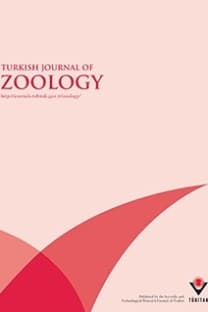Determination of optimum temperature and photoperiod for mass production of Oxya hyla hyla (Serville)
Insects are natural food for many vertebrates. Being nutritionally rich, acridids can be used to produce high quality feed for livestock industries. For a sustainable supply for the feed manufacturing companies, a huge acridid biomass must be obtained on a regular basis. Therefore, for successful acridid farming, a laboratory rearing system in semi-controlled conditions is proposed to produce a huge acridid biomass. Experiments were conducted to determine a favorable temperature and photoperiod for rearing the chosen multivoltine species, i.e. Oxya hyla hyla. For this purpose nymphal mortality, growth rate, fecundity, fertility, and adult dry weight were determined. The results revealed that, at 35 ± 2 °C with a L:D photoperiod of 12:12, fecundity and fertility were maximum, while nymphal mortality, egg incubation period, nymphal duration, adult life span, and adult dry weight were favorable. It was concluded that 35 ± 2 °C with a photoperiod of 12:12 is suitable for mass production of Oxya hyla hyla in acridid farms.
Determination of optimum temperature and photoperiod for mass production of Oxya hyla hyla (Serville)
Insects are natural food for many vertebrates. Being nutritionally rich, acridids can be used to produce high quality feed for livestock industries. For a sustainable supply for the feed manufacturing companies, a huge acridid biomass must be obtained on a regular basis. Therefore, for successful acridid farming, a laboratory rearing system in semi-controlled conditions is proposed to produce a huge acridid biomass. Experiments were conducted to determine a favorable temperature and photoperiod for rearing the chosen multivoltine species, i.e. Oxya hyla hyla. For this purpose nymphal mortality, growth rate, fecundity, fertility, and adult dry weight were determined. The results revealed that, at 35 ± 2 °C with a L:D photoperiod of 12:12, fecundity and fertility were maximum, while nymphal mortality, egg incubation period, nymphal duration, adult life span, and adult dry weight were favorable. It was concluded that 35 ± 2 °C with a photoperiod of 12:12 is suitable for mass production of Oxya hyla hyla in acridid farms.
